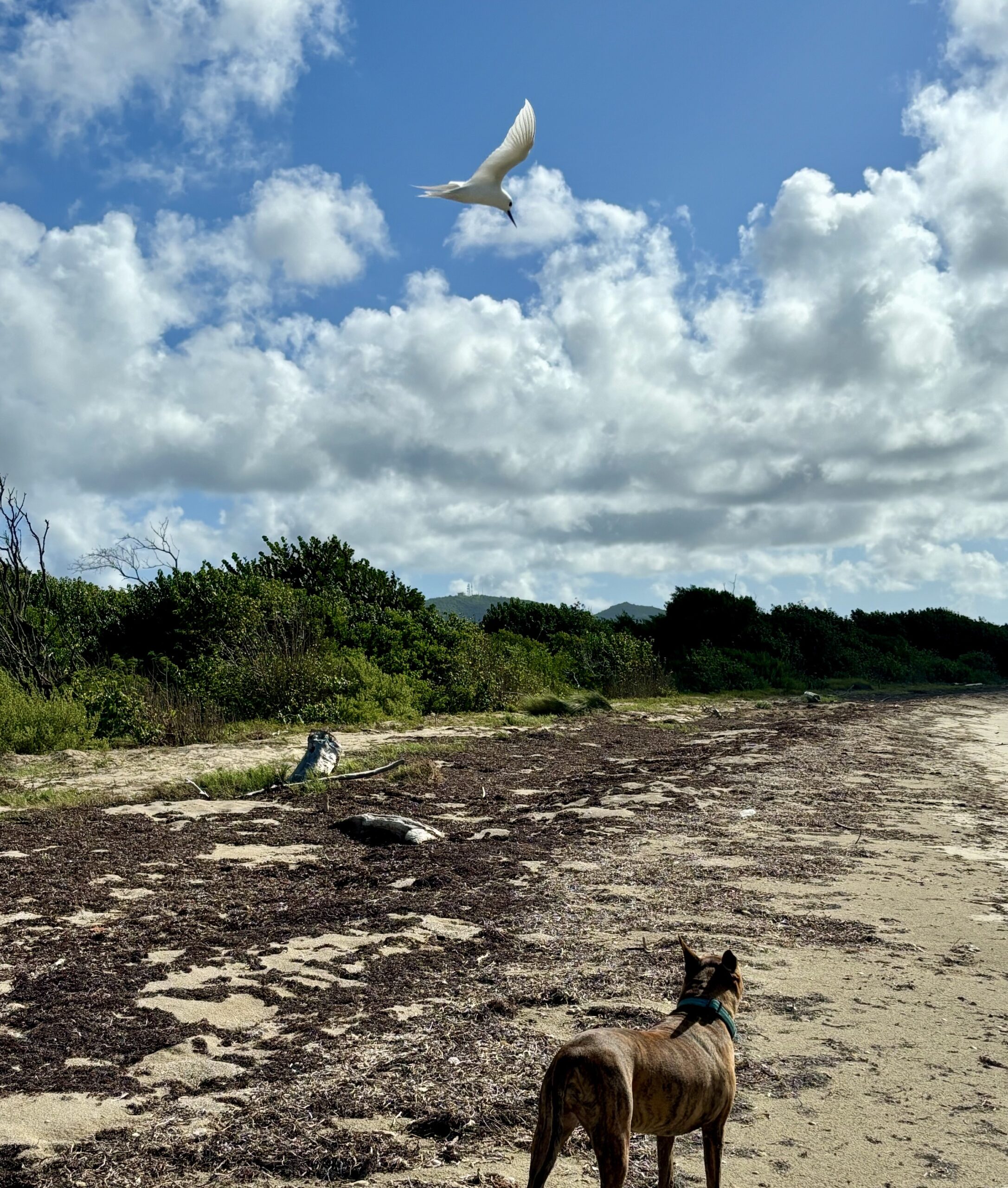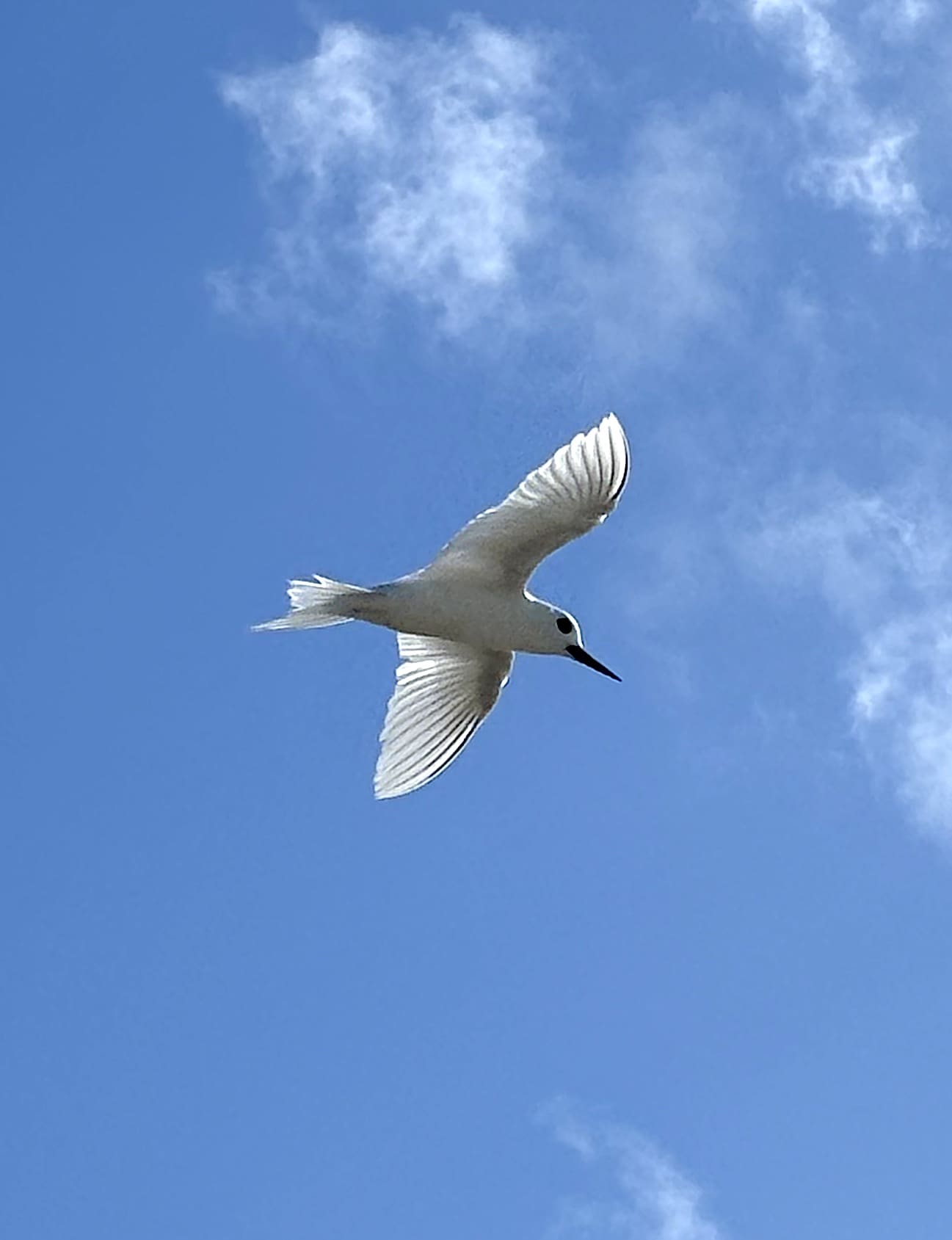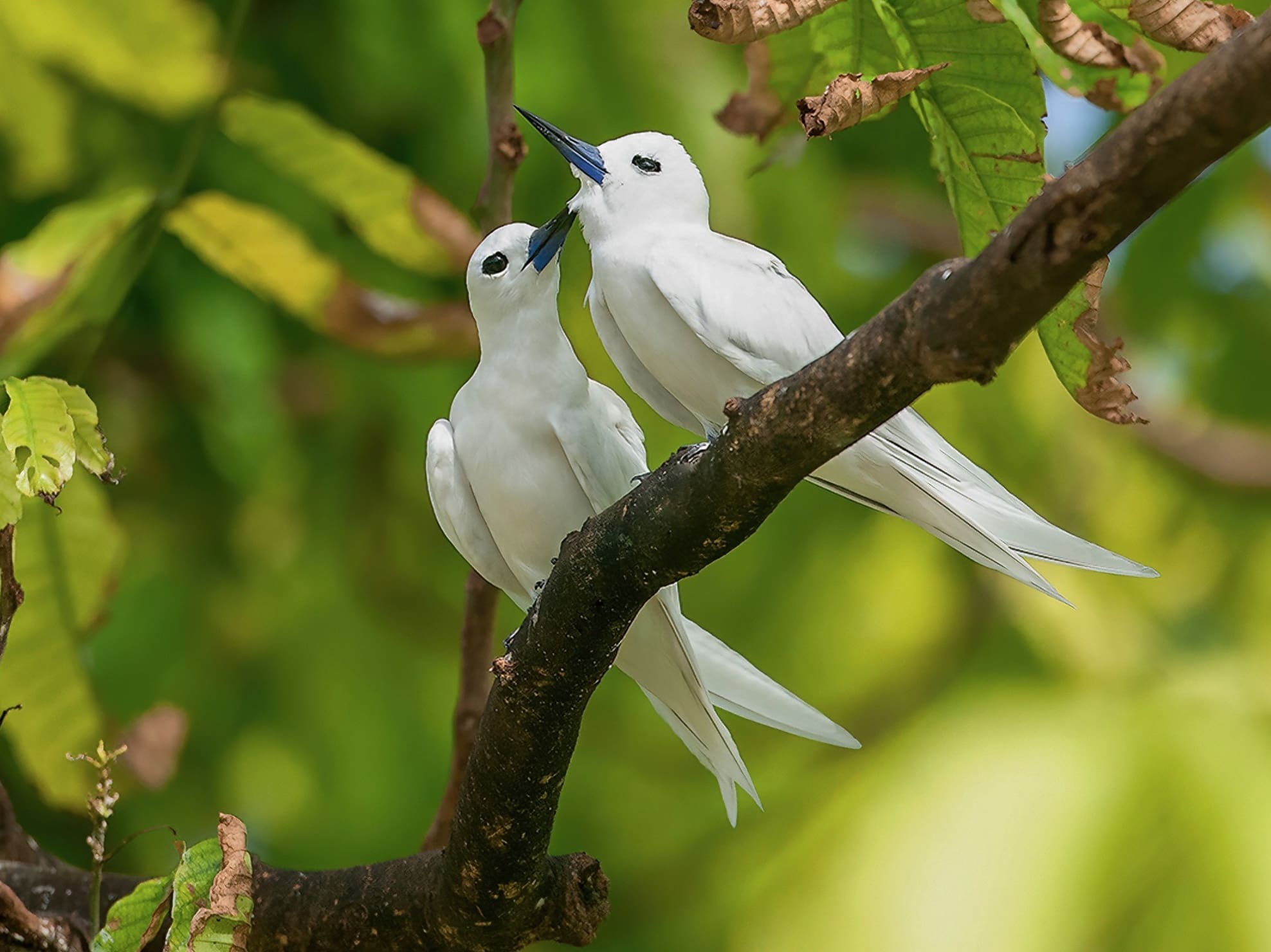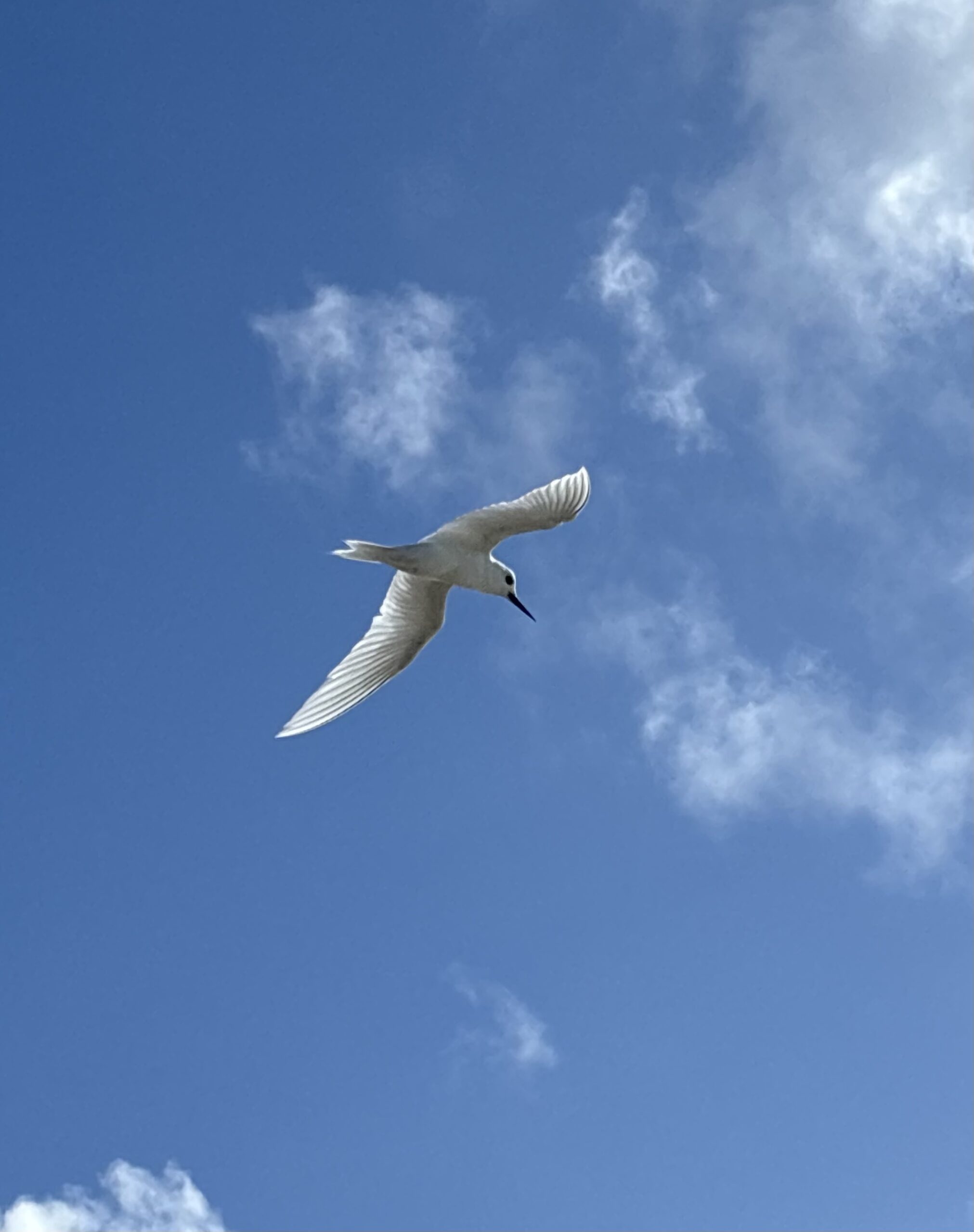A rare White Tern, only the second ever recorded in the West Indies, was spotted at Sandy Point National Wildlife Refuge on Aug. 11 by Jennifer Valiulis, executive director of the St. Croix Environmental Association. This extraordinary discovery highlights the critical importance of wildlife refuges like Sandy Point in providing sanctuary for lost and exhausted birds, the association announced.
A Rare Encounter at Sandy Point
Valiulis was on a routine sea turtle track patrol along the southwest shore of St. Croix when something unusual happened — a completely white bird hovered above her dog, following them along the beach. The bird’s graceful, floating behavior was unlike anything she had seen before, according to the press release.

“I first assumed it was a Least Tern,” Valiulis recalls. “But as I looked closer, I realized the markings weren’t right.”
Unlike the small, gray-backed Least Tern common to the area, this bird was larger, entirely white, and had striking black eyes. Valiulis captured several photos that would later confirm the bird’s identity, the press release stated.
A Mystery Solved
Back home, Valiulis struggled to identify the bird using local resources. She shared her photos with a U.S. Virgin Islands birding group chat, where ornithologists, including BirdsCaribbean’s Executive Director Lisa Sorenson, weighed in. After further research, the group concluded that Valiulis had indeed spotted a White Tern, a species usually found in the Pacific Ocean around Hawaii and much less commonly in the South Atlantic, the release stated.

Caroline Pott, a former St. Croix resident and now a Wildlife Biologist on Midway Island in the Pacific, confirmed the identification. “I live with White Terns—they’re everywhere here,” Pott said. “That is most definitely what it is. They love to follow, floating as you describe, like the birds in Cinderella.”
A Rare Visitor Finds Refuge
This sighting marks only the second time a White Tern has been recorded in the West Indies, with the first occurring in San Salvador, The Bahamas, in June 2010. Valiulis emphasized how essential wildlife refuges are for displaced birds. “It’s a safe place for them to rest and refuel so they can hopefully find their way back to where they would normally be found. While we haven’t seen anything quite so unusual at Sandy Point before, it’s not uncommon to spot tired, hungry birds that have strayed from their migratory routes.”
How Did the White Tern End Up on St. Croix?
The White Tern (Gygis alba) is typically found in tropical and subtropical regions, with its normal range spanning the Pacific and Indian Oceans, including Hawaii, and a handful of islands in the South Atlantic. The sighting in the U.S. Virgin Islands is particularly extraordinary because the species rarely strays to the North Atlantic, according to the release.

Seabird expert Rhiannon Austin, who studies seabirds in the Turks and Caicos Islands, explained, “This bird could have been blown off course during a storm or strong winds, a phenomenon known as ‘vagrancy,’ where birds end up far outside their usual range.” She added that changes in weather patterns, possibly linked to climate change, could disrupt traditional migratory routes and food availability, forcing seabirds to stray from their typical habitats. “This sighting is exciting but also a poignant reminder of the broader environmental shifts impacting wildlife globally.”
A Call to Action for Birders
Valiulis’ experience highlights the importance of trusting your instincts and documenting unusual sightings. “Even if it isn’t something very rare, the observation is still valuable,” she advises. She also stresses the importance of taking time to observe nature rather than just collecting data. “Sometimes those anomalies turn out to be something really unusual and exciting—like a White Tern on St. Croix!”

This remarkable sighting has not only thrilled the birding community but also emphasizes the critical role of conservation areas in protecting wildlife, even those far from home, the release stated.
Editor’s Note: Jennifer Valiulis returned to Sandy Point in hopes of spotting the White Tern again but with no success. With Tropical Storm Ernesto approaching, she shifted her focus to hurricane preparedness. Valiulis and her fellow birding enthusiasts will continue their search, hoping to add this rare bird to their life lists. However, the storm may have carried the bird off to another island. Birders in the West Indies are encouraged to keep their eyes open for an all-white tern with a pointed black beak.





